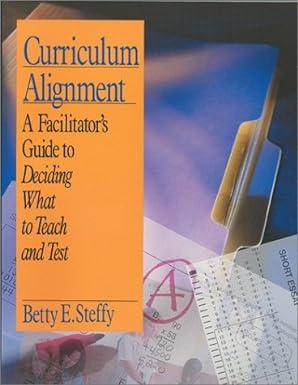Question
Computerized Business Systems (CBS) transforms manual accounting and inventory systems into computerized, more efficient, systems. Many of their customers describe the transition as an overnight
Computerized Business Systems (CBS) transforms manual accounting and inventory systems into computerized, more efficient, systems. Many of their customers describe the transition as an overnight evolution from the dark ages to the 21st century. Manual systems are far too cumbersome with respect to both time and inventory control. CBS's computerized inventory systems, for example, allow every item in inventory, no matter how small, to be tracked at all points throughout the production process. The replenishing stock becomes an automatic process because the CBS system alerts the manager when supplies reach a pre-programmed level. Vicky Pagel has been a financial analyst with CBS for over five years. Although she normally does not get involved with sales, her most recent assignment was to assist Jack Ingram, a new sales representative. Jack is in the process of trying to sell a CBS system to Corbin Mills, a firm that does not know how to determine accurately its weighted average cost of capital (WACC). Therefore, Corbin Mills cannot determine whether the net present value (NPV) of the CBS system is positive or negative. To calculate Corbin Mills' WACC, Vicky first needed to gather information on the firm's cost of raising funds from various sources. As she proceeded with the analysis, she learned that Corbin Mills could issue 20-year corporate bonds at a coupon rate of 9%. As a result of current interest rates, the bonds could be sold for $1,005 each. These bonds have floatation costs of $35 per bond, pay interest semi-annually, and have a par value of $1,000. A corporate tax rate of 40% applies. Corbin Mills can raise additional funds through either retained earnings or new issues of common stock. Their common stock is currently selling at $68.25 per share. The most recent dividend paid was in the amount of $2.25. Corbin's dividends have previously grown at a rate of 4%, but this growth rate is expected to jump to 10% the year after and continue at this rate to infinity. If the firm wanted to sell new shares of common stock, after underpricing and floatation costs, they could do so for $62.75 per share. A final source from which funds could be raised is via preferred stock. $100-par preferred stock can be issued at an 11% annual dividend rate. After floatation costs, the preferred stock would sell for $95.50 per share. The final set of information needed to calculate the WACC is the proportion of total funds that each asset class represents. This information is given in Table 1. In performing the NPV calculation, net after-tax cash flows must be known. These cash flows are given in Table 2. All variables such as improvements in efficiency, employee training costs, and salvage value are already incorporated in the cash flows. Put yourself in Vicky Pagel's position and develop the WACC calculation that will be used in evaluating projects for Corbin Mills. Next, demonstrate whether the NPV for the proposed CBS system is positive or negative. The following questions will lead you step-by-step to complete the analysis. To perform this type of analysis you are implicitly making several assumptions. Since Jack will be the only one involved in communicating with Corbin Mills, he must completely understand all of the assumptions and calculations that will be made throughout the analysis. For this reason, the analysis must be clear as well as technically correct.
Questions Table 1 contains the market and book values of each asset class.
Table 2 shows the after-tax cash flows associated with the CBS system.
Use these tables to answer the questions which follow.
Table 1
| Asset Class | Book Value | Market Value | Target Ratio |
|---|---|---|---|
| Long Term Debt | $35,000,000 | $33,400,000 | 35% |
| Preferred Stock | $5,000,000 | $7,000,000 | 5% |
| Common Stock | $40,000,000 | $42,000,000 | 40% |
| Retainment Earnings | $10,000,000 | $10,000,000 | 20% |
Table 2
| Year | After-tax net cash flow |
|---|---|
| 0 | -$480,000 |
| 1-10 | $80,000 |
| 11 | $10,000 |
1. What is the firm's cost of preferred stock? Is this the same as the after-tax cost of preferred stock?
2. What is the firm's cost of long-term debt? Is this the same as the after-tax cost of long-term debt?
3. What is the firm's cost of retained earnings? Is this the same as the after-tax cost of retained earnings?
4. What is the firm's cost of new common stock? Is this the same as the after-tax cost of new common stock?
5. Using market values, what is Corbin Mill's WACC?
6. Using book values, what is Corbin Mill's WACC?
7. Using target ratios, what is Corbin Mill's WACC? Explain why the target ratio will not always be maintained by a firm.
8. Which weights, markets, books, or targets, should be used in this analysis? Explain.
9. Would Corbin Mills be better off with the new CBS system (i.e., What is the NPV of the proposed system?)? Does the answer to this question depend upon which weight is used to calculate the WACC? Explain.
Step by Step Solution
There are 3 Steps involved in it
Step: 1

Get Instant Access to Expert-Tailored Solutions
See step-by-step solutions with expert insights and AI powered tools for academic success
Step: 2

Step: 3

Ace Your Homework with AI
Get the answers you need in no time with our AI-driven, step-by-step assistance
Get Started


